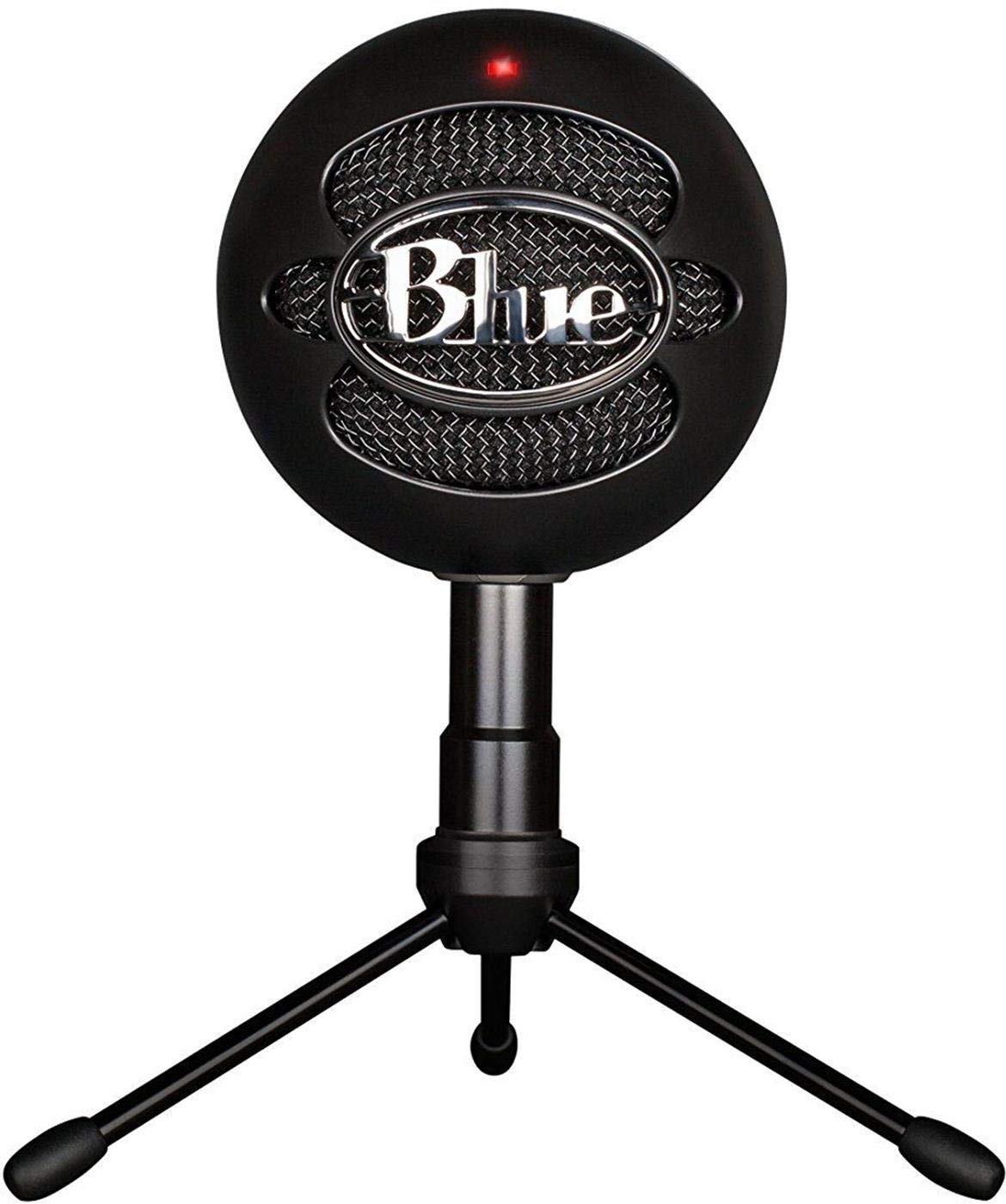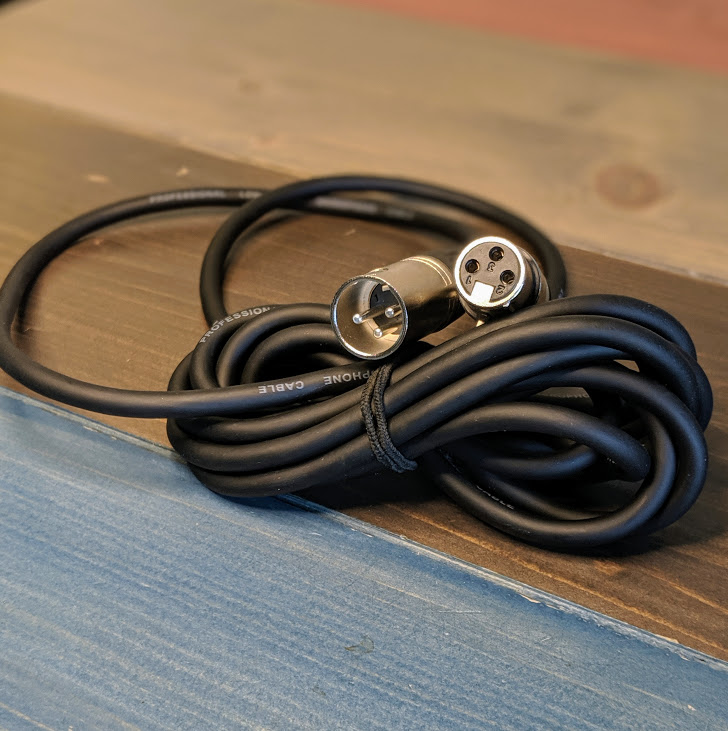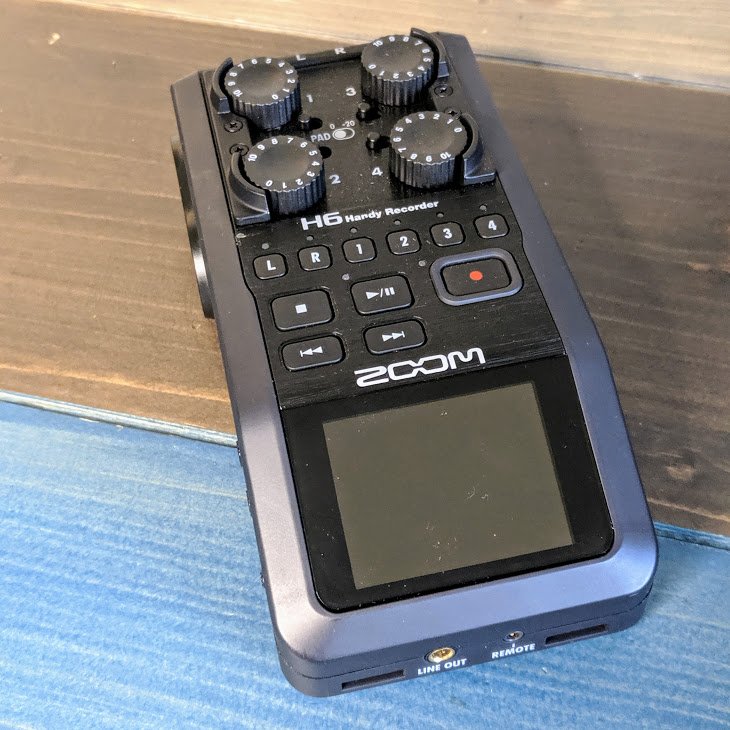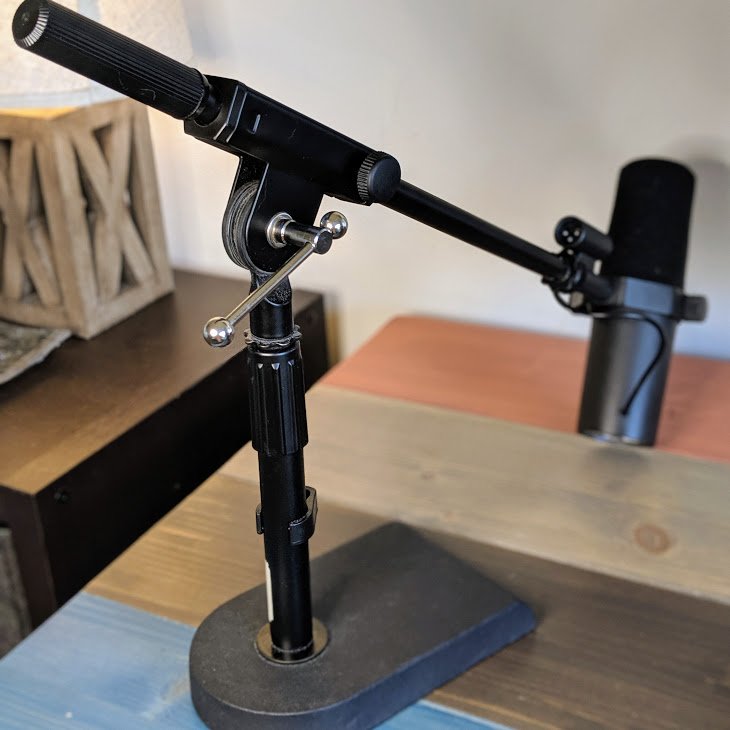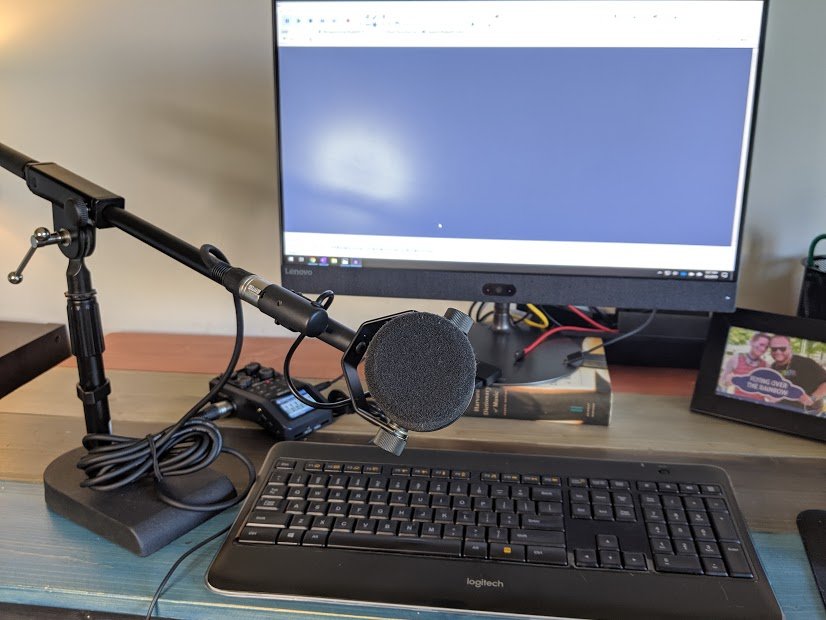Since I started producing Easier, I have folks ask me how to start a podcast all the time. I think, to most, it seems pretty daunting.
The truth is, it’s not as overwhelming as it seems! We’re going to go behind the scenes of this show so you can see that starting your own podcast is definitely within your grasp.
But first, let’s cover a quick life hack for busting dust around your home.
Table of Contents
Keep dusters everywhere
Make Life Easier
If you find that dust gathers in certain spots around your home, try this: Buy a few Swiffer dusters and stash them strategically.
I’ve got one in my closet, one in my dresser, and even one in my car! (The one in my car is an extended one so I can reach the whole dashboard.)
My house stays much more dust-free with this hack ?
How to start a podcast of your own: Going behind the scenes of Easier
Make Work Easier
How to start a podcast: Getting started
Come up with an idea that excites you
The idea for your show should fill you with energy. It should be something you’re comfortable talking about, and you should be able to speak with confidence.
A good way to check: Sit down and brainstorm ideas for episodes. If you can come up with at least 30 with relative ease, you’re probably on the right track.
Have a content tilt
Ask yourself, “Why should someone listen to my podcast instead of others on similar topics?” That’s your tilt. It’s your differentiator.
It’s not 100% necessary to be able to answer this right at first. But, trust me, it’ll make things much easier down the line if you’ve at least got a sense of why your show is different from the rest of the pack.
Commit
You decide the interval of your show. Whether it’ll be daily, weekly, bi-monthly, etc., you can set the pace.
Whatever that pace is though, make sure you’re fully aware of what you’re committing to.
For example, my show airs weekly. That means that, for as long as I plan to do the show, I have to show up every single week. If I’m not consistent, my audience won’t be either, and the show won’t grow.
Be realistic with yourself here. It’s not worth the time and expense to launch a show only to give up after 5 episodes. If you’re truly interested in recording your own show, dig deep and commit. Your audience will thank you!
How to start a podcast: Beginner’s gear
Folks wondering how to start a podcast often think it’ll be super expensive to start. The truth is, you don’t need a ton of fancy equipment to get started!
My recommendation: buy inexpensive gear at first and see if podcasting is right for you. You can always upgrade later.
Computer
You’ll need a computer to record and edit your files. It doesn’t have to be super robust; if it was made after about 2013, you should be good to go.
Also, Windows and Mac both work fine.
Blue Snowball iCE microphone
You don’t need a ton of fancy equipment to get started. My recommendation: buy inexpensive gear at first and see if podcasting is right for you. You can always upgrade later.
I used the Blue Snowball iCE to record the first 8-10 episodes of my show, and it definitely worked well. (The audio for my first few episodes was rough because I didn’t yet understand proper mic technique and not so much about the quality of the mic. We’ll talk more about that a bit later.)
One of the benefits of this type of microphone is that it’s a USB mic. That means you can plug it directly into your computer without an audio interface (more on that in the section on my current gear).
Audacity (editing software)
Audacity is an excellent, free tool for recording and editing audio. It has a bit of a learning curve, but nothing that YouTube can’t cure.
Check out this video by master podcaster Pat Flynn for help getting started with Audacity for podcasting.
Website
A website isn’t totally required when first getting started. However! It’s my opinion that podcasts should have a site for SEO and show notes (hence this site), and the earlier it’s established, the better.
If you’re comfortable putting a site online, definitely do it. I recommend Bluehost for hosting and domain purchases.
If you’re looking for help designing a website, I actually offer that service! Email me at podcast@wordpress-739001-2510787.cloudwaysapps.com for info.
If a site is an obstacle between you and getting started though, skip it for now.
Podcast host
This one is definitely required. A podcast host is a place to upload your finished podcast episodes. It’s also the place that pushes them out to all of platforms where people listen (e.g., Apple Podcasts [formerly iTunes], Google Podcasts, Spotify, Stitcher, etc.).
Some tech-savvy folks may be wondering if it’s a good idea to skip the host and just put your files up on your website (if you’ve got one). I, and many others, say no. You can run into trouble with traffic and quality. Also, you’ll lose out on stat tracking.
Trust me. Sign up for a podcast host.
I’ve used Buzzsprout since starting and I love it! (Curious why? Drop a note in the comments and I’ll share!)
How to start a podcast: My current gear
The beginner’s gear definitely got the job done. But, once I got into the podcasting groove, there were a couple of upgrades I wanted to make.
From beginner’s gear, I still use…
I’m still using the following gear from above:
- My Lenovo desktop or laptop (I switch depending on where I feel like recording)
- Audacity editing software
- Bluehost website
- Buzzsprout host
Shure SM7B microhphone
In terms of upgrades, the microphone was priority #1. The Snowball is excellent for starting out, but for the best audio quality, I needed a new mic.
After a ton of research (including reading reviews, watching review videos, watching expert videos, talking to audio folks), I settled on the Shure SM7B.
This mic is fantastic. The audio quality is excellent, it doesn’t pick up a ton of background noise, and it makes me sound good.
It is a bit pricey though, so I definitely don’t recommend jumping right into this mic when starting. Seriously. Start with the Snowball, find your groove (I’d say 8-10 episodes), and then make the switch.
Also, a little tidbit, this microphone is incredibly popular. It was even used by Michael Jackson to record Thriller.
Zoom H6 recorder
If you go the route of an XLR mic like the Shure SM7B, you’ll need a way to connect, or interface, your mic with your computer.
What is XLR?
XLR, or eXternal Line Return, is a common connector / cable used with microphones. It looks like this:
I use an Amazon Basics XLR cable and am very happy with it!
Connecting XLR to your computer with the Zoom H6
Most computers don’t have an XLR line-in, meaning you’ll need to convert the signal. To do this, I use a Zoom H6.
The H6 has a few key benefits:
- It’s the interface I need to use my SM7B with my computer. The XLR cable goes from the mic to the H6, then I connect the H6 to my computer with a USB cable.
- It provides gain (or increased volume) to the microphone. It’s necessary because, on its own, the SM7B is pretty quiet. That helps with eliminating background noise, but diminishes the quality of the final audio.
- Also, I can record multiple folks at one time using the H6. It’s great for podcast guests.
- Finally, it’s a portable, battery-powered mic all on its own. That means I can take it out in public and use it to record.
The H6 is also a bit pricey.
If you’re looking to streamline, Zoom makes some more cost-effective models, including the Zoom H4N. It’s accomplishes the same stuff as the H6, except you can only connect a couple of mics to it (instead of 6 with the H6).
Microphone boom stand
Finally, you’ll need something to prop the mic up. You can go with a tripod, but I decided to pick up this simple desktop boom stand. It’s the Proline MS112.
I love it because it’s super flexible, and allows me to prop my mic up almost anywhere I’m recording. I’m never standing when I record, so this works perfectly.
My setup
In case you’re curious, here’s a photo of all of my gear set up and ready to record.
Location & sound
This desk is in my living room. When I first started though, I used to record in my walk-in closet!
You just want to be sure that there’s as little ambient, background noise as possible. I turn off fans, heat / AC, etc., when I record.
How to start a podcast: The process
Alright, it’s time to really dig into answering the question how to start a podcast.
Below is the process I go through for each episode I record. A full episode of the show, including prep, recording, and post-production takes about 2-3 hours. This will vary based on the length of the episode.
Also, when you first start editing, it’ll be a slow process for sure. You’ll speed that up over time, and with my tips below!
1. Select a topic
I have a running list of topics for the show. I keep them in Trello.
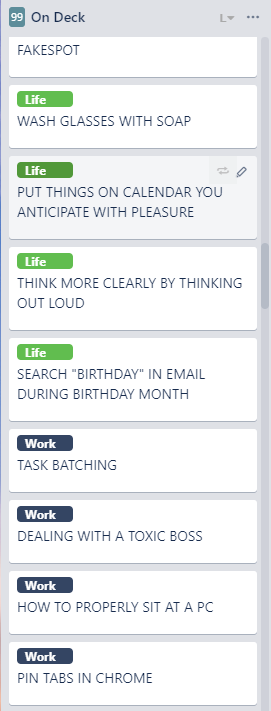
For each episode, I select at least a Life topic and Work topic.
Also, starting this season, I’m branching out into Struggle Bus and Favorite Things topics! Those are in the list, too ?
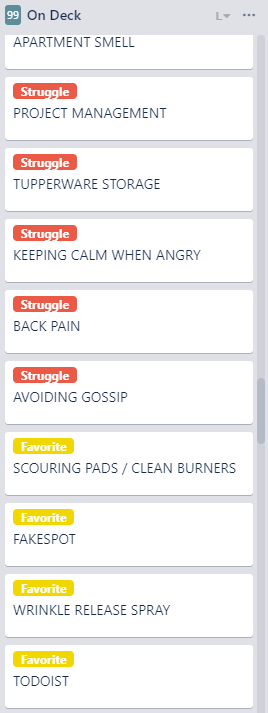
2. Research keywords
Before I ever start writing or recording, I do some keyword research on Google.
Why? Ultimately, I’m trying to grow the Easier platform, and one way to do that is to get organic search traffic (i.e., free traffic). To do that, I optimize each episode for search, also known as Search Engine Optimization, or SEO.
SEO is a huge topic on its own, and not really the scope of this episode.
In a nutshell, I make sure that each episode has a keyword that folks are searching for on Google.
3. Write headlines
A good headline is critical in getting folks to read / listen. My headlines are pretty carefully crafted to meet these criteria
- Accurately represent what’s in my post / episode (no clickbait, ever)
- Be interesting and grab attention
- Include the keyword from my research
- Be the right length
This may seem super tedious. It used to be, to be completely honest. But, over time, I’ve gotten much better at it.
Also, I use an amazing tool called CoSchedule Headline Analyzer. It’s a complete lifesaver. You enter the headline you’re thinking about using, and it will then spit back a score which tells you how good of a headline it is.
It’s good practice to write 20-30 headlines per post / episode so you can ensure you get a good one. But, now, I often only have to write 3-5 to get one that’s solid.
Now, the Keyword Research and Write Headline steps take me only about 5 minutes total to complete.
4. Outline
I’m optimizing this step right now, actually.
I used to just bullet out the talking points before recording. As of this episode though, I’m writing out the full show notes first.
You probably won’t notice any difference in the tone or conversational style of the episode because I’m definitely not using the notes as a script. Rather, I’m writing out the notes fully first to avoid having to edit a lot after recording. Basically, if I have more thoughts already written down, it’ll mean not having to go back and add them in post-production.
5. Produce (i.e., Record)
We’re finally at the recording stage! I hook up the gear you saw earlier, take a few deep breaths, and hit record.
Some shows are scripted, and that’s totally fine.
For Easier though, I prefer a light, conversational style. And truthfully, I’d gotten pretty good at it before I ever decided to record a podcast: I’ve been thinking out loud (read: talking to myself) for as long as I can remember. I do it to clear my mind and process my thoughts. That’s actually been a huge help in producing this show.
Actually, from the survey I just got done doing, I got a ton of feedback saying that folks like the way I host! ?
However you decide to do it though, my recommendation here is to be consistent. If you start scripted, it’ll be a challenge to change later. Same is true vice-versa.
6. Post-production
There a quite a few steps here. Most of them are short, however. Here’s a quick summary:
- Edit the episode
- Upload to Buzzsprout (podcast host)
- Polish show notes, including reviewing for SEO
- Ensure all details are attended to
- Categories
- Tags
- Date
- Images
- etc.
- Add a redirect (the thing that allows you to go to wordpress-739001-2510787.cloudwaysapps.com/episode-number [e.g., wordpress-739001-2510787.cloudwaysapps.com/45] instead of having to type in a giant link)
Bonus Tips
- Commit. Consistency is the key to success.
- If you want to grow your show, show up on a regular basis. You can determine the interval, but make sure you’re there when you say you’ll be.
- If you show up sporadically, your audience will too (if at all).
- It takes THREE YEARS of putting out consistent content for a platform to fully mature.
- Remember, you don’t have to spend a ton of money to get started. Go with the basics and upgrade as you go.
- The microphone is your friend. Get close to it when you record.
- Seriously, try this out. Pick a couple of paragraphs to read. Then, sitting an arm’s length away from the mic, record yourself reading. Then, do the same thing, except sit five inches (about the width of your hand) away. Go back and listen. The difference will amaze you.
- Let 10 seconds of silence pass after hitting record before you start talking. This will allow you to easily edit out any ambient background noise in post-production.
- You will get used to hearing the sound of your own voice. It’ll be awkward right at first, but that goes away pretty quickly. Don’t let that stop you.
- Also, anyone, with any voice, can host a show. Don’t let that stop you either.
Need some help?
If you’re still stumped about how to start a podcast, or if you need help with any of the tips I’ve covered here, I’m happy to guide you! Let’s chat in the comments ?
Lots of Favorites
My Favorite Things
Covering how to start a podcast definitely generates a ton of Favorite Things! You’ll find them all together after the show notes. Or hit the button below to go right there:
See all Favorites from this Episode
What things do you struggle with?
Riding the Struggle Bus
For this first installment of Riding the Struggle Bus, I actually found that I was having trouble coming up with a solid list of topics!
As of right now, I have 8 topics (including today’s) in my backlog. That’s not enough for me.
So, I’d love to hear what things you struggle with on a day-to-day basis. Maybe I can help you with those. Or, maybe I’ll be on the Struggle Bus too, and I can share your topic on a future episode.
To share your thoughts, call in and leave me a message!
Get the Free Download!
15 Strategies for Getting More Done in a Day
I have a fantastic freebie I'd love to send to you. It's a one-page guide that covers my favorite 15 strategies for making the most out of every day.
Click below to grab this download now!
